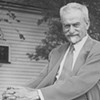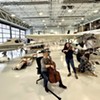click to enlarge 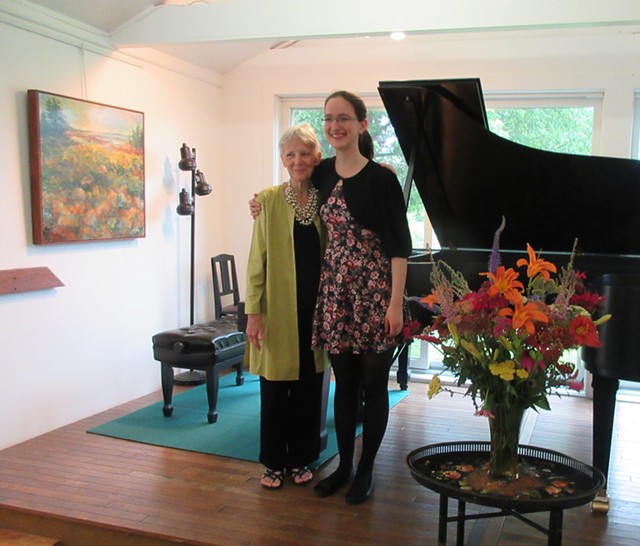
- Amy Lilly
- Elaine Greenfield and Lauren Altenmueller
The skies were darkening under an approaching storm as the
Adamant Music School began its Sunday concert. But inside the small, air-conditioned performance hall, seated at a Steinway concert grand set against a wall of windows, pianist Victor Avila was oblivious.
After a deep exhale, the 27-year-old native of Mexico played Bach’s first “Goldberg Variation” as if he believed it to be the most beautiful piece ever composed. As indeed it was, in his hands.
Despite its generalized name, Adamant Music School is solely for pianists. It has been helping them hone their skills for 77 years — ever since cofounder Edwine Behre chose the tiny rural hamlet as a summer respite for her New York City students.
click to enlarge 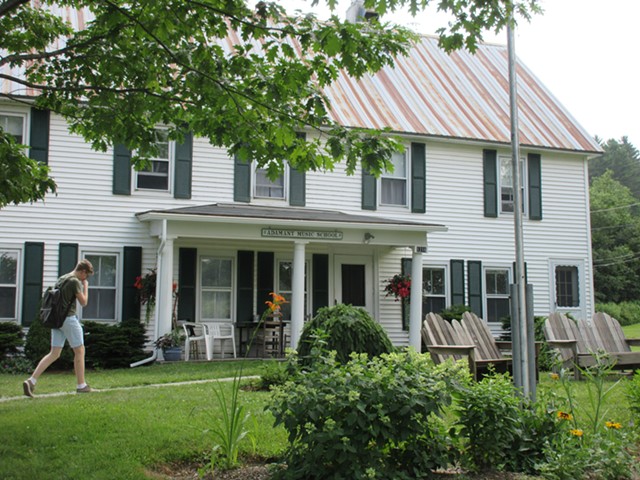
- Amy Lilly
- Adamant Music School
Behre and two friends, the journalist Alice Mary Kimball and her husband, Harry Godfrey, rented a single building in 1942. The campus now consists of 46 buildings on 200 acres sited around a series of picturesque cascading ponds with stone-lined waterfalls.
An astonishing 50 pianos are distributed through the buildings, which include cabins barely larger than the instrument they house. To stroll through the campus, landscaped with flower beds and stone sculptures, is to drift from one concert to another.
“I’ve never found a place like this, where a whole area is dedicated to piano,” says Sophie Kim, a 19-year-old from Ontario who played one of Franz Schubert’s “Drei Klavierstücke” with masterful command.
Adamant accepts up to 30 students each summer for its traditional three-week residential session; smaller groups attend separate five-day master classes with individual professionals. (
Menahem Pressler, the venerable Israeli-American pianist who is now 95, will teach this summer’s final one.)
Selected by video and audio audition, attendees typically come with a specific goal, such as preparing for a competition, a junior recital or undergraduate auditions, says Esther Wang, a faculty member since 2007.
Participants are all ages. Sunday’s concert, featuring seven students, included a 16-year-old, a mature cellist-pianist and a young woman about to complete her doctorate in piano performance.
The teaching method has remained constant since the days of Behre: daily, small-group instruction from 9 a.m. to 12:30 p.m., emphasizing participation and non-competitiveness.
Says Matthew Manwarren, a faculty member since 1998 who teaches at Winthrop University in South Carolina: “It’s a very European model. It goes back to how Liszt taught — the group class instead of the one-on-one.”
click to enlarge 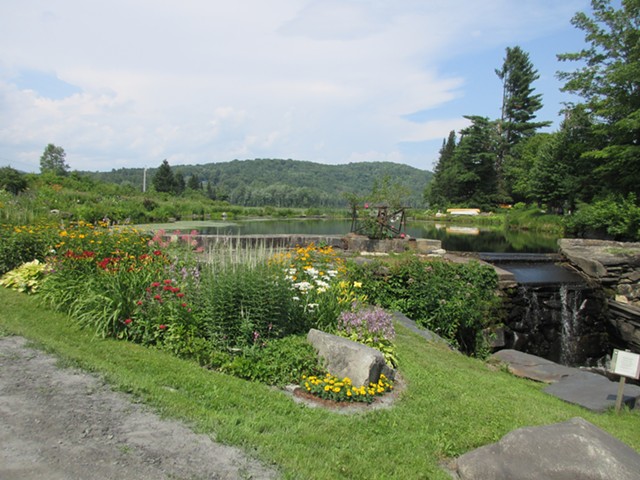
- Amy Lilly
- The grounds at Adamant Music School
After classes, the students disperse to practice.
How do they chose among the school’s 50 pianos? Kim explains that students go on a piano tour the first day, playing each one in turn. They submit their favorites, and a lottery then determines which instrument can be played by whom and when. Kim practices on three. Most of the school’s pianos are Steinway grands.
Outside of those two imperatives — instruction and practice — life at Adamant Music School is fairly simple. Following meals cooked by a resident chef, dishwashing duty rotates among the students. “Everyone has a job, even the faculty,” says Elaine Greenfield. Artistic director of Cathedral Arts concert events at
St. Paul’s Cathedral in Burlington, Greenfield has taught at Adamant every summer since 1973. Behre was her mentor.
“Edwine always said it’s not just a school,” says Greenfield. Adds Manwarren, “We foster collaborative living.”
Concerts are held three days a week, and tickets for the public are a bargain at $10 each. Sunday’s concert was full, with only some of the white plastic lawn chairs taken by students supporting their fellow participants. The final concert of this summer’s traditional session is Friday evening.
Village living centers on the Co-op, which provides both groceries and mail. (It also hosts the
Adamant Black Fly Festival every June.) Montpelier is eight miles away; those with cars ferry their friends to the capital. Asked what the students do for fun, Kim says after a pause, “We went to Ben & Jerry’s [factory in Waterbury] yesterday!”
The concert ended with two Canadians: Lauren Altenmueller conjuring magic through glissandos in her performance of “Ondine” from Maurice Ravel’s “Gaspard de la nuit” and Nicholas Deek performing Chopin’s gravely wistful “Ballade No. 1 in G minor” and reveling in its pounding finale. A smiling Altenmueller, who is completing her doctoral studies at Western University in Ontario, asked Greenfield, her teacher, to join her in a photo in front of the concert grand.
“It’s fun. You get to know the kids really well,” Wang comments. On faculty at Gustavus Adolphus College in Minnesota, the pianist also teaches at a summer program at Interlochen Center for the Arts in Michigan. The latter attracts more than 2,000 students, she says. “This is much more intimate.”







































![Black Fly Festival [SIV26]](https://media1.sevendaysvt.com/sevendaysvt/imager/black-fly-festival-26/u/square/2291717/episode26.jpg)
